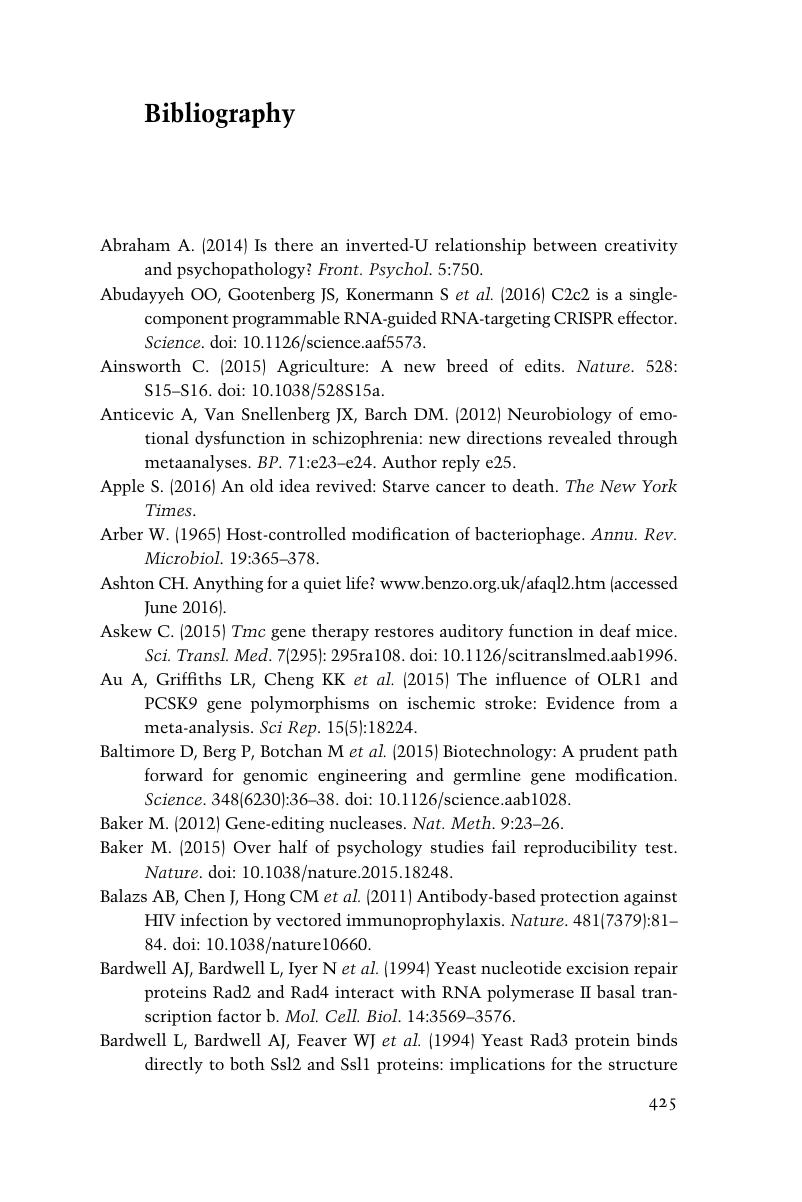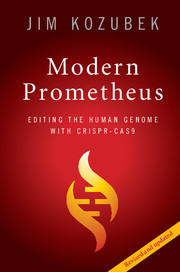Book contents
- Modern Prometheus
- Frontispiece
- Modern Prometheus
- Copyright page
- Contents
- Preface
- Acknowledgements
- 1 Crispr, Cas and Capitalists
- 2 The Gene Trade
- 3 Asilomar
- 4 We Can Play God in that Cell
- 5 Modern Prometheus
- 6 Biopolitics
- 7 Life in a Bubble
- 8 To Summon a Leviathan
- 9 A Molecular Fairytale
- 10 Secrets from a Freshwater Fish
- 11 Gene Hackers
- 12 Washington
- Notes
- Bibliography
- Index
- References
Bibliography
Published online by Cambridge University Press: 19 April 2018
- Modern Prometheus
- Frontispiece
- Modern Prometheus
- Copyright page
- Contents
- Preface
- Acknowledgements
- 1 Crispr, Cas and Capitalists
- 2 The Gene Trade
- 3 Asilomar
- 4 We Can Play God in that Cell
- 5 Modern Prometheus
- 6 Biopolitics
- 7 Life in a Bubble
- 8 To Summon a Leviathan
- 9 A Molecular Fairytale
- 10 Secrets from a Freshwater Fish
- 11 Gene Hackers
- 12 Washington
- Notes
- Bibliography
- Index
- References
Summary

- Type
- Chapter
- Information
- Modern PrometheusEditing the Human Genome with Crispr-Cas9, pp. 425 - 441Publisher: Cambridge University PressPrint publication year: 2018



